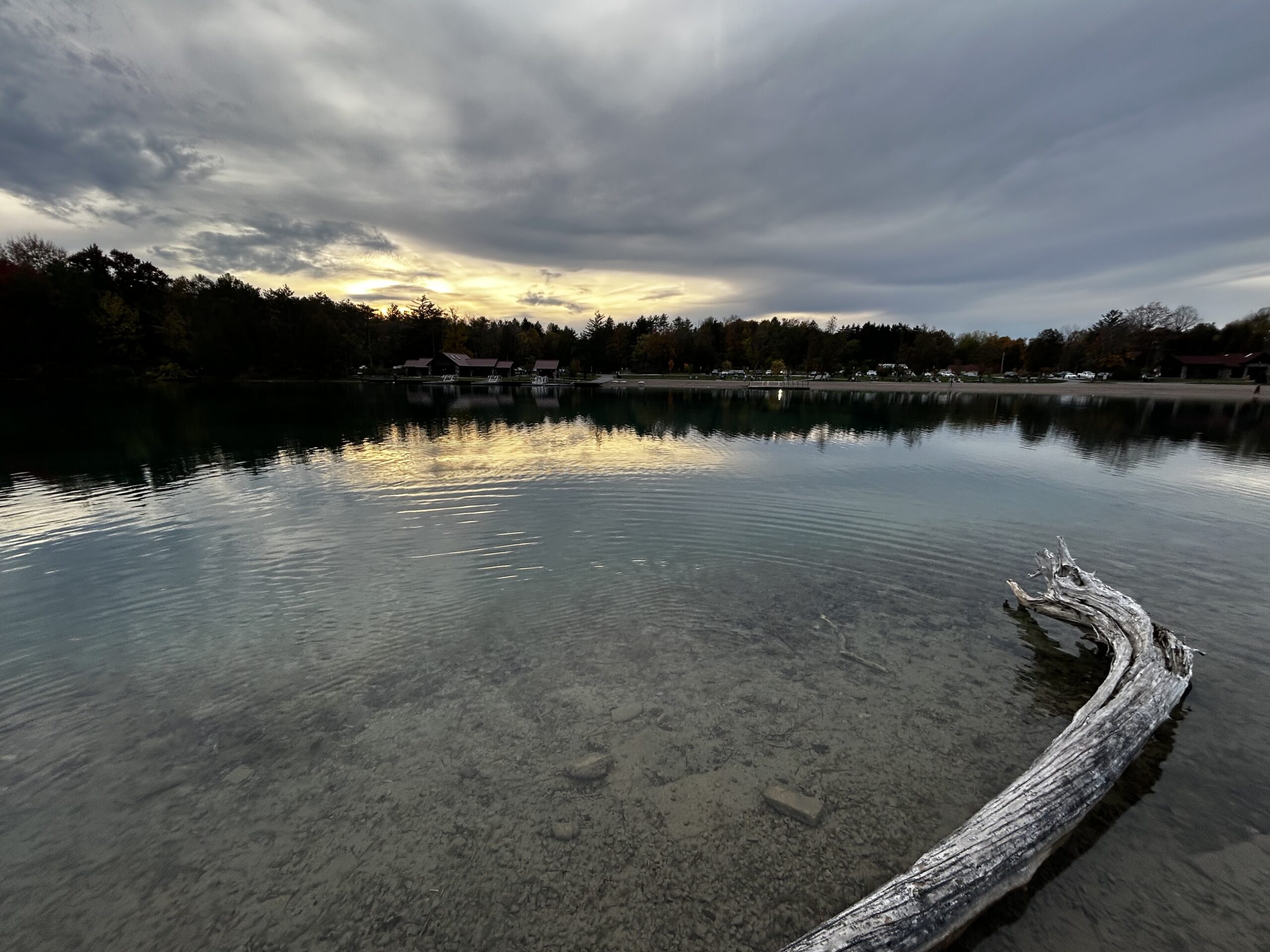
Mikerica Tyler

Mikerica Tyler
Shining and shimmering, clear like glass in which you can see coral and fish enjoying the day, sits a meromictic lake in Fayetteville, New York. The periphery of evergreens and oaks is the only indication that this lake is not in a tropical destination in the Caribbean, but rather in upstate New York.
Green Lake is home to blue tropical waters, 15,000-year-old fresh water reefs, and life forms dating back to the Ice Age. A body of water that does not turn over and allows these ancient forms and corals to thrive, is called a meromictic lake. Green Lake is one of only 36 meromictic lakes in the world.
It is also popular for swimming, hiking, camping, fishing, water activities, picnicking, and also in-depth education for all ages about the lake. New York State Parks aids in bringing the serenity of our natural world to the general public, fostering a care for our Earth. Katie Mulverhill and Cara Gannon are Environmental Educators at Green Lakes State Parks, both coming from differing backgrounds but using their compatibility they provide a vital resource for this park.
Meromictic lakes are unique because of their structure and natural ecosystems. Unlike in other bodies of water, layers of water contained in meromictic do not mix. In Green Lake, the water column is split into three layers, which is not the case for every meromictic lake. The top layer is the fresh water run-off and is where most recreational water activities are being held, the middle layer is occupied by purple sulfur bacteria, and the bottom layer is spring-fed salt water.
Normally, seasonal changes in sunlight and temperature would mix the layers of this lake together, but as a meromictic lake, the layers not mixing is the reason for the water remaining very clear. This layering effect creates a perfect home to a cyanobacteria that photosynthetically shed off calcium flakes that create fresh water reefs and sponges. Given the clarity of the lake, it is very easy to view these reefs and sponges from the shoreline.
Cara Gannon who is a Central Region Environmental Education Assistant with a background in Marine Science Education, said the lakes at Green Lakes State Park are unique to experience within the United States. “Not only do we have Green Lake, we also have Round Lake at the park, and they’re both meromictic lakes,” she said. “There’s only about 13 of these types of lakes in the United States.”
The larger of the two lakes at the park, Green Lake, is rare for its quirky structure. Glaciers from the Ice Age dug into the ground like a pint of ice cream being scooped into, creating a 195-foot depth and just two miles of circumference. After these glaciers melted, ancient life forms were left to flourish in the lake and are still thriving there to this day. “It’s really important for us to try and protect them and do as much research as we can on them,” Gannon said. There are not many places on earth with pristine conditions for 15,000-year-old organisms to be able to grow and thrive. This makes Greens Lake the prime location to expand our knowledge on these life forms.
Green Lake gets it’s name from the greenish blue color that is observed. In the top layer there lives cyanobacteria that photosynthetically shed off calcium carbonate. These little flakes of calcium carbonate float through the water column and reflects a blue/green wavelength to the human eye, this is why the water looks a tropical color.
The cyanobacteria shedding off calcium carbonate is also the reason the fresh water coral reefs form. This is because, as the calcium carbonate floats through through the water column it will eventually bump into something floating in the water of the edge of the lake. These little flakes compile together as time goes on and create fresh water reefs.
Without the layering of this lake or the presence of cyanobacteria shedding of calcium carbonate, this lake would not have its unique color or the natural reefs that continue to grow. The structure of the lake, the water components, and glacier activity makes an almost unreal scenario for this lake to exist.
Mulverhill touched on a lot of creatures that live around Green Lake. Some of her favorites were the gray tree frog, tiger salamander, and the ring-necked snake. This habitat facilitates many different types of life and is a place that fosters the growth of next generations.